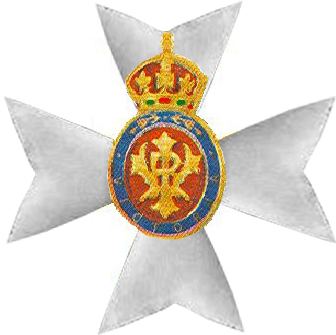Type Personal award Established 1902 | Status Currently awarded | |
 | ||
Eligibility Men and women, of any nation Awarded for At the monarch's pleasure | ||
The Royal Victorian Chain is an award instituted in 1902 by King Edward VII as a personal award of the monarch (i.e. not an award made on the advice of any Commonwealth realm government). In the order of precedence it ranks above the Royal Victorian Order, with which it is often associated but not officially related. Originally reserved for members of the Royal Family, the chain is a distinct award conferred only upon the highest dignitaries, including foreign monarchs, heads of state, and high-ranking individuals such as the Archbishop of Canterbury.
Contents
History
The Royal Victorian Chain was created by Edward VII in 1902, six years after his mother created the Royal Victorian Order. The Royal Victorian Chain ranks above all the Royal Victorian Order honours in order of precedence but it is not officially part of the Order. Edward created it to honour his mother "as a personal decoration for Sovereigns, Princes, and other Royal personages, and also for a few eminent British subjects." The first recipients included the King's son, George, Prince of Wales (later George V), and the King's brother, Prince Arthur.
Design
The chain is in gold, decorated with motifs of Tudor rose, thistle, shamrock, and lotus flower (symbolizing England, Scotland, Ireland, and India, respectively) and a crowned, red enamelled cypher of King Edward VII—ERI (Edwardus Rex Imperator)—surrounded by a gold wreath for men, upon which the badge is suspended. The chain is worn around the collar by men or with the four motifs and some chain links fixed to a riband in the form of bow (blue with red-white-red edges) on the left shoulder by women. However, the Queen's sister, the late Princess Margaret, Countess of Snowdon, in later life chose to wear her chain around the collar, as male recipients do.
The badge is a gold, white enamelled Maltese Cross; the oval-shaped central medallion depicts Victoria's royal and imperial cypher—VRI (Victoria Regina Imperatrix)—on a red background, surrounded by a crown-surmounted blue ring bearing the word Victoria. Both the crown and Queen Victoria's cypher are studded with diamonds.
Eligibility and allocation
The Royal Victorian Chain does not confer upon its recipients any style or title, nor does it give a precedence within any Commonwealth honours system. However, it represents a personal token of high distinction and esteem from the monarch. The chain can be conferred upon men and women, both of the realms and foreign. There are at least 11 recipients living, of whom only four were not heads of state at the time of award.
It has normally served as the senior award for Canadians, who are generally ineligible to receive knighthoods under federal Cabinet policy. Only two Canadians have thus far received the chain: Vincent Massey and Roland Michener, both former governors general.
The Royal Victorian Chain must be returned on the death of the recipient.
